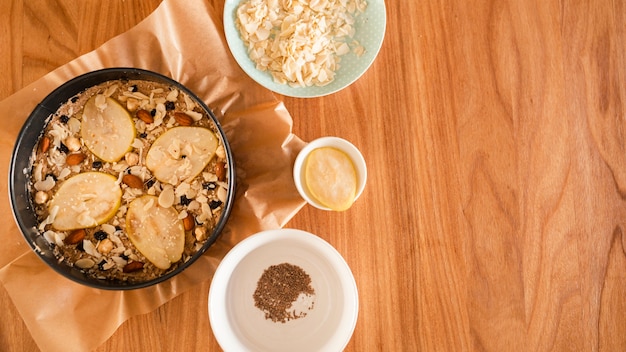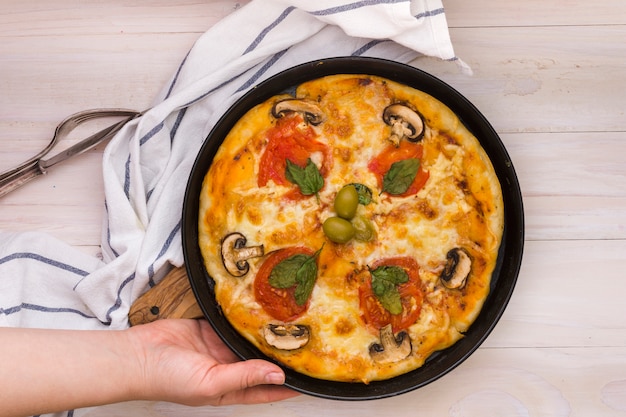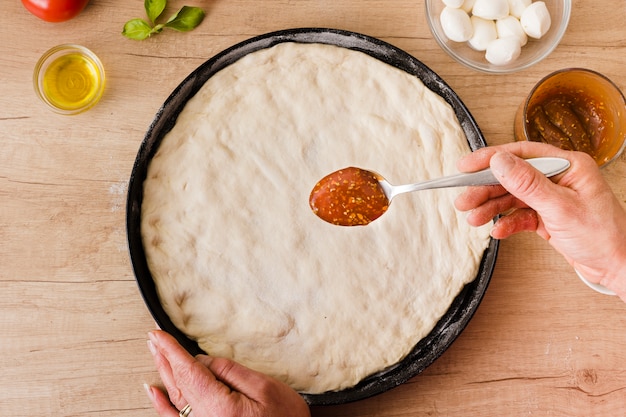Ah, chicken pot pie. A dish that evokes warmth, comfort, and the delicious aroma of a home-cooked meal. But amidst the joy of baking, the question of baking time looms large. How long do you bake this masterpiece? How do you ensure that your pie crust is golden and flaky while the filling simmers to perfection? Fear not, fellow pie enthusiasts, for I'm here to guide you through the intricacies of chicken pot pie baking time and ensure your creation is a triumph.
Part 1: The Fundamental Factors of Baking Time

First things first, let's understand the key ingredients that influence the baking time of our beloved chicken pot pie. We're talking about the core components: the pie crust and the filling. These two elements work in harmony to create a culinary symphony, and their individual characteristics play a significant role in determining how long your pie needs to bake.
1.1 The Pie Crust: A Foundation for Success
The pie crust, that golden, flaky haven that encases the delicious filling, is the first factor we need to consider. It's not just a simple shell; it's the foundation upon which our chicken pot pie stands. And like any good foundation, it needs the right amount of time to solidify and achieve its intended strength.
There are two main types of pie crusts we'll be dealing with:
- Homemade pie crust: This classic, from-scratch crust, is made with flour, butter, and a touch of love. It offers a delightful flakiness and a rich, buttery flavour. However, because it's made from scratch, it requires a bit more time to bake through.
- Pre-made pie crust: This convenient option is a godsend when you're short on time or prefer a simpler approach. It's readily available in the freezer section of most supermarkets. While it's quicker to bake than homemade crust, it generally needs a shorter baking time to prevent burning.
Let's not forget the impact of the crust's thickness. A thicker crust, like those found in deep-dish pies, will naturally require a bit more time in the oven compared to a thinner, shallow crust.
1.2 The Filling: The Heart of the Pie
Now, let's dive into the heart of the chicken pot pie, the filling. It's the star of the show, the flavourful symphony that makes this dish so irresistible. The type and quantity of ingredients within the filling have a direct impact on the baking time.
Think about it: a filling packed with hearty vegetables, like peas and carrots, will require a bit more time to cook through than a simple chicken and gravy mixture. And the volume of the filling? Well, a deep-dish pie with a generous amount of filling will naturally need more time in the oven than a shallow one with a more modest amount.
Part 2: Oven Temperature: Finding the Perfect Heat

Now that we've established the foundations of baking time, let's move on to the oven, the crucible where our chicken pot pie will transform into a culinary masterpiece. The temperature you set your oven to is crucial, and it can vary depending on your oven's idiosyncrasies and the type of crust you're using.
2.1 Traditional Oven Temperatures
Generally, most recipes recommend baking chicken pot pie at 375°F (190°C). This temperature is ideal for creating a classic pie crust with a beautiful golden brown hue. But, as every baker knows, ovens can be temperamental. Some run a little hotter, while others run a bit cooler. That's why it's crucial to keep a close eye on your pie and be ready to adjust the baking time accordingly.
2.2 Adjusting for Pre-Made Crusts
When you're using a pre-made pie crust, the baking time may need to be adjusted. These crusts are often pre-baked or partially baked and can be more delicate than homemade versions. They typically require a slightly lower temperature, around 350°F (175°C), to prevent them from burning.
Don't forget to check the package instructions for specific baking times and temperature recommendations. Manufacturers often provide helpful tips tailored to their particular products. It's always best to err on the side of caution and follow their guidelines for optimal results.
Part 3: Unveiling the Baking Time

Now, let's get to the heart of the matter: how long do we bake this delightful chicken pot pie? Here's a general guideline to get you started, but remember, this is just a starting point. Your oven's personality, the type of crust, and the volume of the filling will all play a role in determining the final baking time.
3.1 Baking Times for Homemade Crust
A classic, homemade pie crust will take approximately 45 to 50 minutes to bake through. You'll know it's ready when the crust is a beautiful golden brown and the filling is bubbling merrily. The crust should be firm to the touch, but not overly hard, indicating that it's cooked through.
3.2 Baking Times for Pre-Made Crust
Pre-made pie crusts tend to be a bit quicker, typically taking 30 to 35 minutes in the oven. Again, checking the package instructions for specific baking times is crucial.
Remember, these are just general guidelines. You'll want to keep a close eye on your pie and adjust the baking time based on your oven's tendencies and the visual cues the pie provides.
Part 4: The Art of Checking for Doneness
Your chicken pot pie is nestled snugly in the oven, and the delicious aroma of chicken and vegetables fills the air. But how do you know when it's reached its peak of perfection? There are a few reliable methods to determine if your pie is cooked to perfection.
4.1 The Golden Crust Test
As mentioned earlier, a golden brown crust is a good indicator that the pie is nearing completion. The crust should have a firm texture, but not be overly hard or brittle. This suggests that the heat has penetrated the crust, allowing it to solidify and develop its characteristic golden hue.
4.2 The Filling Bubble Test
A telltale sign of a well-cooked chicken pot pie is a bubbling, lively filling. As the filling heats up, the moisture within it expands, causing it to bubble around the edges of the crust. This bubbling action indicates that the filling has reached a safe internal temperature and is ready to be enjoyed.
4.3 The Toothpick Test
If you're still unsure, the trusty toothpick test is your best friend. Insert a clean toothpick into the center of the filling. If it comes out clean, your pie is ready to be devoured. However, if there's still filling clinging to the toothpick, it needs a few more minutes in the oven to ensure the filling is cooked through.
These tests, combined with the visual cues of a golden crust and a bubbling filling, will help you determine when your chicken pot pie is ready to be enjoyed.
Part 5: The Art of Resting
Your chicken pot pie is out of the oven, its crust is a glorious golden brown, and the filling is bubbling with anticipation. But before you dive into a slice, remember, patience is a virtue. Allowing the pie to rest is crucial for achieving a perfect texture and preventing a culinary disaster.
5.1 Resting Time
Give your pie at least 15 to 20 minutes to cool and settle before serving. This resting period allows the filling to thicken and cool slightly, preventing it from being too hot or runny when you cut into it. It also gives the crust a chance to firm up, reducing the risk of it crumbling when you slice into it.
5.2 Resting Tips
While your pie is resting, you can loosely cover it with foil to keep it warm. However, avoid using a tight-fitting lid as it can trap steam and make the crust soggy. The goal is to maintain the warmth of the filling while allowing the steam to escape.
Resting your pie is a crucial step in achieving a perfect outcome. It's a testament to the art of baking, where patience and timing are just as important as the ingredients themselves.
Part 6: The Chicken Pot Pie Experience
The moment has arrived. Your chicken pot pie has cooled, the filling has set, and the crust is calling out to you. This is the culmination of your culinary adventure, the time to savor the fruits of your labour.
6.1 Savouring the Flavours
As you take your first bite, let the symphony of flavours wash over you. The tender chicken, the creamy gravy, the crunch of the vegetables, and the flaky, buttery crust all come together in a delicious harmony. Each bite is a testament to your baking prowess and a reminder of the joy that comes from creating something delicious.
6.2 Sharing the Joy
There's a special magic that unfolds when you share a homemade chicken pot pie with loved ones. It's a dish that brings people together, sparking conversations and creating lasting memories. It's not just a meal; it's an experience, a symbol of comfort and warmth, a reminder of the simple pleasures in life.
Chicken pot pie is a dish that transcends mere culinary creation. It's a love letter to the art of baking, a testament to the power of simple ingredients to create something extraordinary, and a reminder of the joy of sharing a delicious meal with those we cherish.
Part 7: Tips and Tricks for Success
You've got your recipe, your oven is preheated, and your ingredients are prepped. But there are a few extra tips and tricks that can help you bake the perfect chicken pot pie every time, ensuring a result that even the most discerning pie critic would approve of.
7.1 Chill the Dough
Chilling your pie dough is a crucial step in ensuring a flaky, tender crust. It's a secret weapon that many seasoned bakers swear by. When you chill the dough, you allow the gluten in the flour to relax, preventing it from becoming tough and chewy.
Chilling your dough for at least 30 minutes is a good starting point. However, if you have the time, chilling it for an hour or more is even better. The longer you chill the dough, the more time the gluten has to relax, resulting in a more tender and flaky crust.
7.2 Blind Bake
If you're using a single crust for your chicken pot pie, blind baking can be a game-changer. It's a technique that involves baking the crust without the filling, preventing it from becoming soggy and ensuring a beautifully golden brown bottom crust.
To blind bake your crust, prick the bottom with a fork to prevent air bubbles from forming. Then, line it with foil, and fill it with pie weights (or dry beans). Bake for 10 to 15 minutes, then remove the foil and weights and bake for another 5 to 10 minutes until lightly golden. This pre-baking process will give your crust a head start and prevent it from becoming soggy when you add the filling.
7.3 Don't Overfill
It's tempting to pack your pie with a generous amount of filling, but resisting that urge is essential for a successful outcome. Overfilling can cause the filling to spill over, creating a messy situation and potentially compromising the crust. A generous filling is great, but make sure you leave a bit of room for the filling to expand and bubble during baking.
7.4 Vent for Success
Before you pop your pie into the oven, make a few slits in the top crust. This simple step allows steam to escape during baking, preventing the crust from puffing up unevenly and creating a beautiful, evenly browned surface. It's a small detail that can make a big difference in the overall appearance and texture of your pie.
7.5 Baking Time Cheat Sheet:
Here's a quick cheat sheet to help you figure out the appropriate baking time for your chicken pot pie:
| Crust Type | Filling Type | Approximate Baking Time |
|---|---|---|
| Homemade | Simple Chicken & Gravy | 45-50 minutes |
| Homemade | Chicken & Vegetables | 50-60 minutes |
| Pre-made | Simple Chicken & Gravy | 30-35 minutes |
| Pre-made | Chicken & Vegetables | 35-40 minutes |
These are just general guidelines. You'll need to adjust the baking time based on your oven's tendencies and the visual cues your pie provides. Keep an eye on the golden brown crust and the bubbling filling, and use the toothpick test to confirm doneness.
Part 8: FAQs
I know you might have some questions about baking the perfect chicken pot pie. So, here are some frequently asked questions to help you on your culinary journey.
8.1 What if my pie crust is too soft?
If your pie crust is too soft and won't hold its shape, don't panic! Just chill it for a few more minutes in the fridge. This will help it firm up enough to be rolled out and placed in the pie pan.
8.2 Can I use frozen chicken for my filling?
Absolutely! Frozen chicken works perfectly well in chicken pot pie. Just make sure to thaw it completely before adding it to your filling. This ensures that the chicken cooks evenly and reaches a safe internal temperature.
8.3 What can I use as a substitute for pie weights?
If you don't have pie weights, don't worry. You can use dry beans, rice, or even pebbles to weigh down the crust during blind baking. Just make sure to wrap them in foil to prevent them from touching the crust directly. This will help to prevent the crust from puffing up unevenly and ensure a beautiful, flat base.
8.4 Can I freeze leftover chicken pot pie?
You certainly can! Freezing leftover chicken pot pie is a great way to enjoy it later. Simply let it cool completely, then wrap it tightly in plastic wrap and foil. It should stay fresh in the freezer for up to 3 months. To reheat, defrost it in the refrigerator overnight, then bake it in a 350°F (175°C) oven for about 30 minutes, or until heated through.
8.5 What are some different ways to serve chicken pot pie?
Chicken pot pie is a versatile dish that can be served in many ways. You can enjoy it hot, straight out of the oven, for a hearty and comforting meal. You can also serve it cold, as a picnic lunch or a light snack.
For extra flavour, add a dollop of sour cream or a sprinkle of fresh herbs. The possibilities are endless!
Part 9: The Final Word
There you have it – everything you need to know about baking the perfect chicken pot pie. It's a comforting classic that's always a hit, whether you're serving it for a family dinner, a potluck, or a cozy night in.
So, gather your ingredients, put on your apron, and let's get baking! And remember, the most important ingredient is love. Every bite will be a reminder of your passion for cooking and the joy you bring to the table.
Happy baking!
Everyone is watching

Corn on the Cob: The Ultimate Guide to Perfectly Cooked Ears
Healthy MealsAh, corn on the cob. Just the name evokes images of sunny days, barbecues, and that sweet, juicy flavour that ...

Perfect Pork Roast Oven Cooking Time: A Guide to Delicious Results
Healthy MealsThere's something truly satisfying about a perfectly roasted pork. The aroma alone is enough to make your mout...

Scallops: The Ultimate Guide to Perfect Cooking
Healthy MealsAh, scallops. Those delicate, sweet, and utterly delicious morsels of the sea. They hold a special place in my...

Spaghetti Squash: The Ultimate Guide to Cooking and Serving
Healthy MealsRemember that time you saw spaghetti squash at the supermarket, looking all bumpy and strange, and thought, "W...

Ham Cooking Time: How Long to Bake, Smoke, or Boil a Delicious Ham
Healthy MealsAh, ham. It's a classic, isn't it? A real crowd-pleaser, especially around holidays. And when done right, it'...
